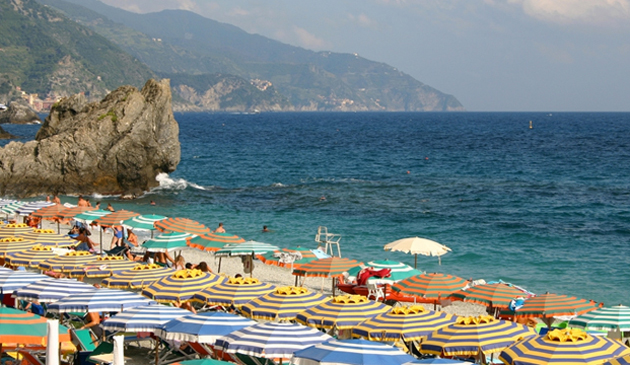Sun-Day is followed by Monday. Now what’s this I hear about a ‘Sunshine Drug’?

I went for an annual physical exam a few weeks ago. I love that my doctor has his patients return after having blood work to review the findings in person and discuss what action to take if there is cause for concern.
I was happy to learn that my body is functioning at above optimum level… EXCEPT that it’s not getting enough vitamin D3.
This didn’t come as a surprise to me, as it’s been mostly grey and gloomy (albeit unseasonably warm) here in NYC lately, and I foolishly didn’t schedule myself on any warm-weather get away this winter like I have the past few years. Lack of direct sunshine on the body = low Vitamin D3 levels.
So what am I to do about this deficiency? My doc suggested D3 supplements, upping my intake of foods that contain this ‘sunshine drug’ and offering my skin up to the rays a few times a week for at least 5-10 minutes at a time. I live for the feeling of sun on my skin. I’ve had countless sunburns as a kid, despite being the kid whose mom often made her wear a t-shirt to the beach, and I’ve learned in recent years to cover my freckle-prone face with a hat or a scarf and huge sunglasses while on the beach. I’ve learned this by watching the cute little freckles I’ve always had on my cheeks and nose spread into large brown spots. Old age spots are wonderful teachers! Future posts will focus on the confusing information about sunscreen – physical vs chemical forms – and will of course include my favorites.
I decided to do some research on the miraculous vitamin known as D3. It really is crucial for us all to make sure we’re getting enough. You won’t believe all the things this important vitamin impacts! (note: Tanning Beds do not provide Vitamin D3.)
(This post was intended to go live yesterday, but during the only down time I had on Sunday, I couldn’t resist the huge patch of bright sunshine that was illuminating the center of my bed. I put on a tank top and shorts and enjoyed a little sunbathing (of course there was a pillow over my face), New York-in-the winter –style.)
Vitamin D 3 is different from plain old Vitamin D, and D2. Vitamin D3 (cholecalciferol, if you care) is the form of the vitamin manufactured within the human body from sunlight. An exhaustive online search of articles written about the conclusive scientific connection between vitamin D3 deficiency and disease is incredibly persuasive.
The basics are: Vitamin D3 builds and maintains your bones.Every tissue in the body, including the brain, heart, muscles and immune system, has receptors for it, meaning that this nutrient is needed at proper levels for these tissues to function well. Humans cannot digest calcium without adequate amounts of Vitamin D3. Please take note: the form of vitamin D3 that we get from food or supplements isn’t fully active. It needs conversion by the liver and then the kidneys to activate. This means that if you’re having difficulty with either your kidney or liver, you aren’t going to be able to absorb vitamin D3 or calcium properly.
The overview of the research I conducted shows that by exposing our non-sunscreen’d skin to the sun’s UVB rays for 5-10 minutes a day for three days a week is generally an effective way to ensure that adequate amounts enter the body. The big down side to living in towns where tall buildings obscure most of the sunshine has resulted in an overwhelming number of people not getting enough of it. Of great importance to note: researchers have found that very dark-skinned people in particular aren’t getting enough vitamin D3 because their beautiful melanin acts as a natural sunblock, and from what I’ve read, it’s recommended that you, with the gorgeous natural sunscreen, spend an average of 20 minutes in direct sunshine, three days a week.
Since Vitamin D3 improves the antibacterial, antiviral, and anti-parasitic functioning of the immune system, a lack of it has been shown in numerous studies to be highly correlated with the following ailments:
Cancer, Heart Disease, Psoriatic and Rheumatoid Arthritis, Seasonal Affective Disorder, Musculoskeletal Disorders (including back pain)Asthma, Osteoporosis, Autoimmune disorders (type 1 diabetes, chron’s disease, MS), Parkinson’s Disease, Autism, ADHD, Influenza, Fibromyalgia, Hypertension and High Cholesterol, Depression, Chronic Fatigue Syndrome, Tooth Decay.
When I was in Social Work grad school we learned about Vitamin D being added to the US milk supply back in the early 20th century: there were so many children living in slums with buildings packed so closely together, without much outdoor play space or time in the sun at all, there became an epidemic number of cases of a disease called Rickets, which is essentially soft bones. It was found that the disease could be avoided by these poor kids if they took a daily dose of cod liver oil, which is rich in Vitamin D3. Much to the joy of children everywhere, cod liver oil sales fell in popularity (it had never been popular based on its taste) when Vitamin D began to be added to milk, instead.
Finally, here are some foods you might want to feed yourself during your most sun-deprived times:
egg yolks, shiitake and chanterelle mushrooms, oatmeal, sweet potatoes, vegetable oils, alfalfa, horsetail, nettle, parsley, fish liver oils, fatty saltwater fish, dairy products, butter, oysters, sardine, salmon and tuna.
Back to this being a beauty blog!!:
Most of us love a sun-skissed look and there’s a ton of makeup out there to help us get it. It makes sense that a post on my favorite bronzers should be next, right? Check back soon!
My friends John and Liz posted this picture yesterday of their Boston Terrier, Miyagi, doing just what I was doing: soaking up the afternoon Vitamin D3!
Comments Off on Sun-Day is followed by Monday. Now what’s this I hear about a ‘Sunshine Drug’? | ...It's your body



